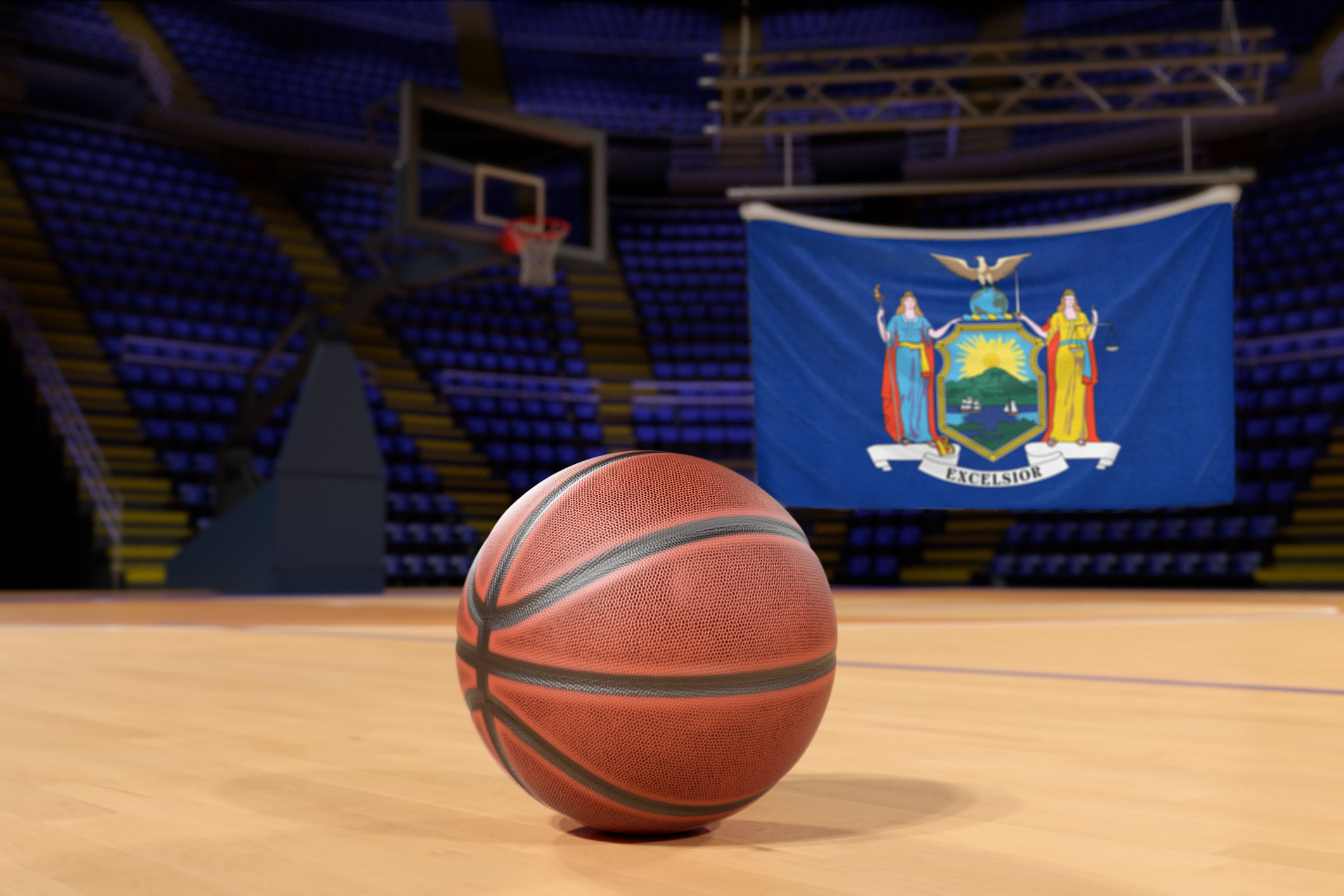New York State Joins Growing Number of States Offering NIL Rights to Student-Athletes

By: Gregg E. Clifton
New York has become the most recent state to adopt a name, image, and likeness (NIL) law. Consistent with all state laws passed to date, the New York Collegiate Athletic Participation Compensation Act authorizes college athletes to monetize their NIL rights without jeopardizing their eligibility or creating any risk of having their college scholarship revoked for asserting their right to utilize their NIL rights. The legislation takes effect immediately, but certain provisions of New York's educational law that were added from the Act will not take effect until January 1, 2023.
The new law contains certain specific provisions regarding student-athlete NIL compensation that are worth noting. They are:
- A college or a college athletic conference cannot provide compensation to a student-athlete for the use of their name, image, or likeness.
- A student-athlete is entitled to utilize professional representation, whether a lawyer or agent, provided they are registered and/or licensed by the state.
- A student-athlete shall provide advance notice of a potential NIL contract to a designated official at the school before entering into the agreement.
The legislation authorizes a college to assert a conflict and potentially block any NIL deal when a conflict exists between the student-athlete’s proposed NIL activities on behalf of the party contracting with the student-athlete and the interests of the school. These conflicts may involve time commitments where the student’s NIL commitment runs counter to the team contract, team activities, or the student’s scheduled classes. There can also be institutional conflicts, where the student’s NIL contract runs contrary to a college contract or the college’s sponsorship agreements.
The specific conflict language in the bill states (emphasis added throughout):
- A student-athlete shall not enter into a contract providing compensation to the student-athlete for use of the student-athlete's name, image, or likeness if a provision of the contract causes a conflict on any of the following grounds:
(i) the proposed contract would cause the student-athlete to violate the team contract; or
(ii) the proposed contract would cause the student-athlete to violate the college's student handbook or code of conduct; or
(iii) the proposed contract would conflict with an existing contract or sponsorship the college participates in; or
(iv) the proposed contract would be judged to cause financial loss or reputational damage to the college; or
NOTE: While a number of the conflict provisions are clear, this specific provision is ambiguous and could lead to potential conflict between the college and the student-athlete. This provision of the bill would disallow a NIL contract where the “proposed contract would reasonably be judged to cause financial loss or reputational damage to the college.” Unfortunately, this provision does not provide any guidance or definition as to what constitutes financial loss or reputational damage or who has the authority to “judge” and make this determination and what standard of review would be used.
This provision also provides schools with broad discretion to prevent NIL contracts. What does that mean? Does the school have an undefined burden to justify and prove financial loss or reputational damage, or can they just assert it on a speculative basis? Does financial loss or reputational damage automatically include any type of alcohol endorsements, cannabis products, sexual-based products or websites, or other endorsements deemed to be immoral by the subjective analysis of the school without the college providing any proof of financial loss or reputation damage?
(v) the proposed contract would require actions by the student-athlete during team activities; or
(vi) the proposed contract would require actions by the student-athlete during scheduled classes; or
(vii) the proposed contract would use the college's name, brand, copy-written materials, trademarks, service marks, symbols, nicknames, trade dress, insignia, mascot, uniform styles, colors, imagery, campus landmarks, or any other intellectual property or indicia; or
NOTE: This provision provides broad based protection for colleges as it drastically restricts and eliminates the potential use of almost all identifying marks affiliated with the school.
(viii) the proposed contract would require the student-athlete todisplay a sponsor's product, logo, brand, or other indicia, or otherwiseadvertise for a sponsor, during official team activities; or
(ix) the proposed contract would require the student-athlete to display a sponsor's product, logo, brand, or other indicia, or otherwise advertise for a sponsor at any time, and such sponsor is a competitor of, or offers products or services within the same category as a sponsor of the college.
NOTE: The language “at any time” contained in this provision, when tied with the sponsor and category clause, could prove to be difficult to enforce and prove.
It is extremely important to note that the legislation is silent as to how the final decision is to be made regarding whether the NIL contract presents any conflict. The legislation provides no guidance or direction on how a school and a student-athlete should resolve any type of dispute that may arise. This raises many questions. For example, is the conflict decision made by the college independently, or is there a meaningful participation opportunity to be offered to the student-athletes and their representatives? Do the student-athletes have any statutory appeal rights if the college maintains that a conflict exists that prohibits the contract, and the student-athlete disagrees? The legislation also does not address whether a college can unilaterally prohibit student-athletes from entering into contracts to receive NIL compensation for engaging in immoral activities (also commonly known as “sin” endorsements)?
Ultimately, the question of how these potential issues are to be resolved remains unanswered. Is the conflict resolution process through mediation or arbitration, or will a student-athlete be forced to file a lawsuit seeking emergent relief to enforce a potential NIL agreement? How do current college NIL policies adopted pursuant to the NCAA’s interim policy impact the law? The bill is also silent as to these especially important issues.
One additional provision of the bill, which justifies further discussion, requires all colleges that participate at the Division I level to offer a student-athlete assistance program or programs. However, the bill contains a modifying provision that limits the college’s “requires” obligation by limiting the obligation with language that states the program “may include.” This clearly limits the college’s legal obligation to satisfy this provision.
Specifically, the bill states (emphasis added throughout):
Each college athletic program that participates in Division 1 NCAA athletics shall offer a Student-Athlete Assistance Program or Programs, designed to provide student-athletes with tools aimed to enhance their well-being and experiences in the classroom, off the field of play, and beyond their tenure as student-athletes. Specifically, the required student-athlete assistance program may include but not be limited to:
(a) A dedicated financial distress fund that would support student-athletes in times of financial need. Disbursements from such fund are not compensation for the purposes of this section;
(b) Access to ongoing mental health support services provided by counselors specially trained to understand the unique issues and pressures student-athletes confront;
(c) Access to broad-based financial literacy training, with a specific emphasis on the issues and opportunities relevant to student-athletes, during and beyond their tenure at the college;
(d) A degree completion assistance program that provides former student-athletes who disenrolled from the college in good academic standing and who earned the NCAA academic progress rate eligibility point for Division I institutions, before completing their degree, access to need-based financial aid and counseling assistance required to support undergraduate degree completion;
(e) Access to training regarding sex-based discrimination and harassment that ensures student-athletes fully understand their rights and responsibilities under the law, including how to make a report of discrimination or harassment on their campus;
(f) Access to leadership training that will set the conditions for student athletes to become successful leaders, improve communication skills to make positive decisions, and manage conflict; and
(g) Access to a career development program, positioned to assist student-athletes in transferring the valuable skills developed during intercollegiate athletic participation, to a successful post-college career.
For additional information on this new law, contact the author of this post. You can also subscribe to this blog to receive email alerts when new posts go up.

